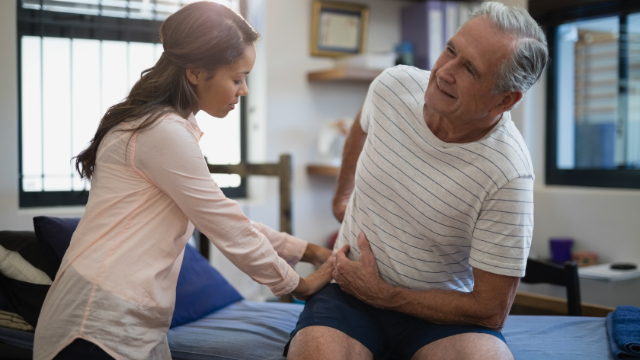News
Hip pain can arise from sudden trauma, overuse, or age-related changes

The hip is a resilient joint that is capable of handling lots of activity and repeated movements, and it can sustain a significant amount of wear and tear. This durability exists because of its complex and multifaceted anatomy that we described in our last newsletter.
But despite these strengths, the hip has a concrete set of limits and is not invulnerable. Repeated activity, not taking enough time to recover, and age can all bring the hip closer to these limits, and when pushed beyond them, the result is injury or pain.
There are a number of conditions that can affect the health of the hip and prevent it from functioning normally, but several problems are seen more frequently due to movement patterns and behaviors that occur in the greater population. Below are 5 of the most common hip-related conditions:
- Femoroacetabular impingement
- Arises when small bony projections (bone spurs) develop along either the femur or acetabulum, causing these bones to rub against each other directly without protection
- Over time, the resulting friction between these two bones can damage the joint, which will cause symptoms like pain or stiffness in the groin or outside the hip that grows worse with turning, twisting, or squatting motions
- Labral tear
- A rip in the labrum, which covers the acetabulum and secures the femoral head in place
- The labrum can be torn by sudden trauma or repetitive motion and overuse in sports like hockey, golf, and soccer, age-related changes, structural problems, or some combination of these factors
- Femoroacetabular impingement can also damage the labrum and lead to a tear over time
- Symptoms are similar to femoroacetabular impingement and can include pain or stiffness, pain in the buttocks area, a clicking or locking sound in the hip, and feelings of instability
- Arthritis
- Rheumatoid arthritis and osteoarthritis are among the most common causes of hip pain
- While the course both these conditions take is slightly different, both involve the wearing away of the cartilage that surrounds the ends of bones in the hip joint, resulting in less protection and eventually friction between them as it progresses
- Symptoms include pain, swelling, tenderness, and stiffness, and a general inability to move the hip and perform routine hip-related activities
- Hip bursitis
- Each hip joint contains two bursae (singular bursa), which are fluid–filled sacs that ease friction between the bones, muscles, and tendons that comprise it
- Bursitis is the inflammation of one of these bursa, which is typically due to repeated overuse or strain of the hip
- The primary symptom is a dull, burning pain on the outer hip that’s made worse with excessive walking or climbing stairs
- Hip tendinitis
- Inflammation of any of the tendons that flex the hips
- Usually caused by repetitive strain and overuse, often from sports or other forms of physical activity
- Symptoms include pain that develops gradually over time, tenderness, and stiffness in the morning or after long periods of rest
Read our next newsletter for a breakdown of the three most effective exercises that will help you avoid hip pain.
Disclaimer:
The information in the articles, posts, and newsfeed is intended for informational and educational purposes only and in no way should be taken to be the provision or practice of physical therapy, medical, or professional healthcare advice or services. The information should not be considered complete or exhaustive and should not be used for diagnostic or treatment purposes without first consulting with your physical therapist, occupational therapist, physician or other healthcare provider. The owners of this website accept no responsibility for the misuse of information contained within this website.
